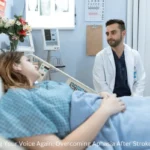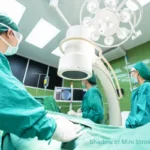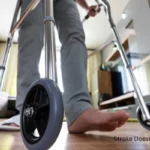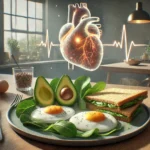Can Stem Cells Heal the Brain After Stroke?
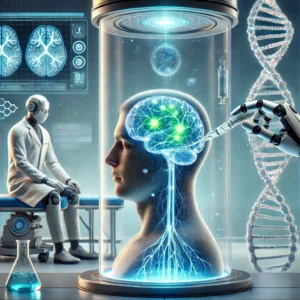
Stroke ranks among top causes of long-term disability and death worldwide, affecting millions of lives each year. Conventional medical approaches usually focus on reducing chances of another episode and controlling side effects. While these methods can be effective at managing symptoms, they rarely succeed in restoring functions already lost. In recent years, researchers have shifted focus to innovative biological strategies that show promise for rebuilding affected areas and encouraging return of functions once thought permanently gone.
Traditional treatments include clot-busting medications, physical and occupational therapy, and, in some cases, surgery. While these approaches help manage disabilities, they do not regenerate damaged brain cells. This is where regenerative medicine offers new possibilities.
What Are Stem Cells?
These unique cells have an amazing ability to transform into different specialized cell types. They possess two key traits:
Self-renewal – This describes a cell’s remarkable capacity to replicate itself. In simple terms, it can divide and produce new copies that are structurally and functionally identical to the original. This process allows a population of cells to maintain itself over time while keeping its unique characteristics intact. Think of it like a natural cloning system, producing copies that continue performing the same roles without losing original identity.
Differentiation – This describes how an immature or basic cell develops into a more specialized form, adopting distinct characteristics and performing specific roles. Essentially, it’s how a general-purpose cell matures to take on a unique function, contributing to proper organization and operation of tissues and organs.
Various types of regenerative cells are utilized in medical research and treatment.
1. ESCs
These specialized units originate from earliest stages of embryo development and have an extraordinary potential to transform into almost any type of cellular unit. Despite significant scientific promise, their use continues to spark debate due to moral and ethical questions around how they are obtained and applied.
2. Adult (Somatic) Stem Cells
These unique biological units are found in areas like bone marrow and fatty tissue, though they don’t have as wide an ability to transform into multiple forms as some of their counterparts. A specific type, often called MSCs, has attracted significant attention in regenerative science. They show strong potential for restoring function in tissues that have been worn down or injured, making them a key focus for researchers and clinicians exploring advanced ways to encourage natural rebuilding and recovery.
3. iPSCs
Induced pluripotent stem models are created by transforming mature adult material to mimic early-stage embryonic material. This method offers a closer match to an individual’s own biological makeup, lowering chances of rejection and improving compatibility for personalized applications.
4. NSCs
Found within nervous system, these specialized components can generate new neurons and help renew existing ones, playing a crucial role in maintaining and rejuvenating nerve tissue.
How Does This Therapy Help Stroke Recovery?
This innovative therapy focuses on repairing damaged brain tissue, restoring lost neurological functions, and promoting overall recovery. Treatment usually involves several key steps:
1. Sourcing and Processing
Specialized building materials come from various sources, including bone marrow, umbilical cord blood, or adipose (fat) tissue. When derived from reprogrammed sources, they are taken directly from an individual’s own tissues. Once collected, these materials go through a careful process of purification and conditioning, ensuring they are ready for safe introduction.
2. Administration of Stem Cells
They can be administered through various methods:
Intravenous (IV) Infusion – With this method, specialized material is introduced directly into bloodstream. Once in circulation, it can travel throughout, including reaching central nervous system, where it interacts with targeted areas more efficiently than other delivery approaches.
Intracerebral Injection – Directly injecting them into the brain to ensure they reach the damaged areas.
Intra-arterial Injection – This method involves directing material straight into an artery that supplies blood to the head. By releasing it into this pathway, delivery becomes more focused, allowing substance to travel directly to intended area. This approach increases precision compared to general circulation, making it easier for introduced material to reach and interact with specific region needing support.
3. Mechanism of Action
Once introduced, these unique building blocks get to work in multiple ways—encouraging repair, enhancing natural functions, and strengthening systems from within.
Neuroprotection – Acts as a safeguard for existing nerve connections, keeping them strong and preventing additional strain or damage.
Neurogenesis – Stimulates creation of new neurons to replace ones that have been lost, contributing to improved neural function.
Angiogenesis – Promotes formation of new blood vessels, increasing oxygen and nutrient delivery to brain regions that need revitalization.
Immune modulation – Reduces inflammation that can disrupt nerve pathways and interfere with signal transmission across neural networks, promoting smoother communication between neurons.
4. Functional Recovery
This treatment helps restore lost functions, improving movement, speech, and cognitive abilities. Patients undergoing it often experience enhanced motor function, better coordination, and improved speech recovery.
Current Research and Clinical Trials
Therapies using regenerative techniques for recovery are still largely experimental, with scientists and doctors actively studying their safety and potential benefits. Research is ongoing through clinical trials that aim to understand how these treatments might support the body’s natural ability to repair itself. Some key developments include:
- Clinical Trials: Several clinical trials have shown promising results, demonstrating improvements in motor function, cognitive abilities, and reduced disability in patients.
- Phase II and III Trials: Advanced clinical trials are evaluating the long-term safety and efficacy of stem cell therapy for stroke. Some studies have reported significant improvements in functional recovery.
- Application of Biomaterials: Researchers are investigating ways to use specially designed biomaterials and structural frameworks to enhance survival, attachment, and functional integration of transplanted material in injured brain regions. These structures create a protective environment, promote proper organization, and enable transplanted components to connect effectively with surrounding tissue, increasing chances of successful recovery and restoration of function.
Challenges and Limitations of Stem Cell Therapy
Even with its promising possibilities, this method encounters a number of significant obstacles:
Limited Availability – Producing and collecting sufficient quantities of these specialized regenerative materials continues to be a significant challenge. Despite advancements, scaling up production to meet demand is difficult, and access remains restricted, making widespread use hard to achieve.
Possibility of Immune System Reaction – Even when using material sourced from an individual’s own tissues, defense mechanisms may still recognize it as foreign. This can trigger an immune response, causing inflammation, swelling, or other complications that interfere with intended outcomes of a procedure.
Possible Reactions – In some cases, swelling, redness, or tenderness may appear at treated areas. There is also a small risk of infection or unexpected tissue growth, which may require careful monitoring by a medical professional.
High Cost and Limited Access – Procedures often come with a significant price tag, making them unaffordable for many. They are typically available only in specialized facilities, limiting access for most individuals.
Ethical and Regulatory Considerations – Use of embryonic material continues to raise moral and societal questions. Research in this field is closely regulated, with strict guidelines and oversight to ensure compliance with legal and ethical standards.
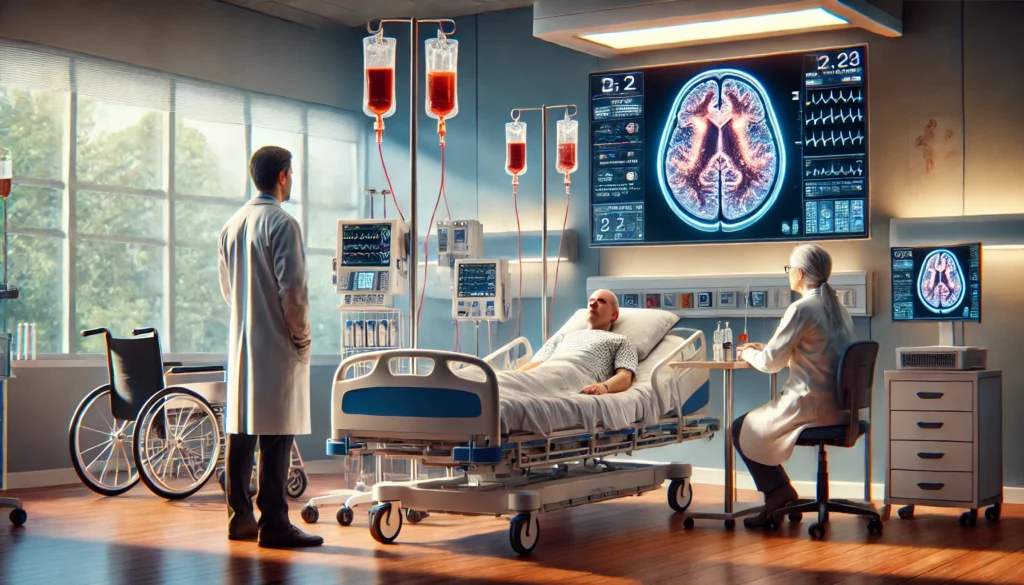
The Future of Stem Cell Therapy for Stroke
This revolutionary method shows remarkable promise in reshaping the way people regain function after injury or illness. Continuous progress in scientific studies, paired with state-of-the-art techniques such as gene modification and engineered biomaterials, is anticipated to improve its overall results while maintaining a strong safety profile.
Potential Future Developments:
Customized Approach – Designing medical plans that fit an individual’s specific genetic profile. This method focuses on understanding how a person’s unique genetic characteristics influence their response to different interventions, allowing practitioners to create highly targeted strategies. By considering these personal biological traits, the approach aims to maximize effectiveness while minimizing unnecessary procedures, offering a truly individualized plan for each patient.
Integrated Approach – Pairing this cutting-edge approach with targeted rehabilitation programs and prescribed medications to improve functional outcomes and overall progress.
Artificial Intelligence in Regenerative Medicine – Using sophisticated algorithms and data-driven insights to refine procedures, optimize personalized plans, and anticipate patient progress, pushing the boundaries of modern medicine.
How soon after a stroke can a patient receive stem cell therapy?
Timing of this intervention plays a crucial role in its effectiveness. Studies suggest multiple optimal periods for application, each offering unique advantages that can influence overall outcomes. Proper timing is therefore essential for maximizing potential benefits.
Early Stage (Within Hours to Days): Research indicates introducing regenerative cells within first 48 hours may reduce inflammation and prevent additional damage. This phase remains under study, as the brain is extremely delicate during initial recovery.
Subacute Phase (Days to Weeks): Spanning first few weeks after an incident, this stage represents a particularly important window for intervention. During this time, nervous system undergoes active repair. Interventions during this period can preserve existing nerve tissue, promote formation of new neural connections, and encourage growth of blood vessels, creating a stronger foundation for overall function and resilience.
Chronic Phase (Months to Years): While earlier administration is generally more effective, some research suggests individuals affected months or years ago may still see improvements. In such cases, it may enhance motor function and cognitive abilities by supporting brain plasticity and regeneration.
Optimal timing varies among individuals, depending on extent of injury and specific method used. Researchers continue to study which periods produce most noticeable improvements, aiming to maximize benefits for each case.
Are there any alternative regenerative treatments for recovery besides stem cell therapy?
Beyond this method, researchers are exploring a variety of innovative techniques aimed at restoring natural function. Some of these options include:
Exosome Approach: Instead of transplanting whole regenerative units, this method uses exosomes—tiny packages released by these units, packed with signaling proteins, RNA, and growth-promoting molecules. These parcels play a role in calming inflammation and encouraging repair and formation of nerve pathways, offering a way to promote tissue renewal without many complications that can arise from introducing entire regenerative units.
Gene Therapy: Researchers are developing ways to adjust specific genes to boost nervous system’s natural ability to mend and adapt. This strategy focuses on promoting growth of new neurons, supporting existing neural networks, and improving blood vessel formation in key areas. By fine-tuning genetic pathways, scientists aim to strengthen resilience, enhance communication between nerve cells, and improve cognitive function.
Neurostimulation Methods: Techniques such as transcranial magnetic stimulation (TMS) and direct electrical stimulation are being explored to increase nervous system adaptability and improve movement and thinking abilities. By activating specific neural pathways, these methods encourage rewiring and strengthening of connections, allowing individuals to regain functions that were previously diminished.
Peptide and Protein-Based Approaches for Neural Function: Certain peptide compounds, like Cerebrolysin, have been studied for their ability to maintain nerve pathway integrity and enhance signaling between neurons, potentially improving overall cognitive performance and preserving neural connections.
Biomaterial Scaffolds and 3D Brain Printing: Specially designed biomaterials can form structural frameworks that encourage living tissue to integrate with injured regions. Cutting-edge experiments are even testing 3D printing to construct miniature tissue structures, aiming to restore function in affected areas.
Conclusion
This cutting-edge procedure is transforming how nervous system regains function, repairing injured tissue and restoring abilities that were once impaired. While still in experimental stages, ongoing studies and controlled trials are gradually expanding knowledge needed for wider application.
As understanding advances, this innovative approach has potential to become a widely used option, offering hope to countless individuals seeking meaningful improvement. Before broader availability, challenges such as ethical considerations, fair access, and compliance with regulations must be carefully addressed to ensure maximum benefit for those who stand to gain most.
At this stage, individuals and medical professionals are encouraged to stay updated on latest breakthroughs and consider participation in ongoing clinical studies when eligible. Outlook for recovery is promising, and these developments could soon play a central role in restoring function and improving quality of life for those dealing with complex nervous system conditions.
